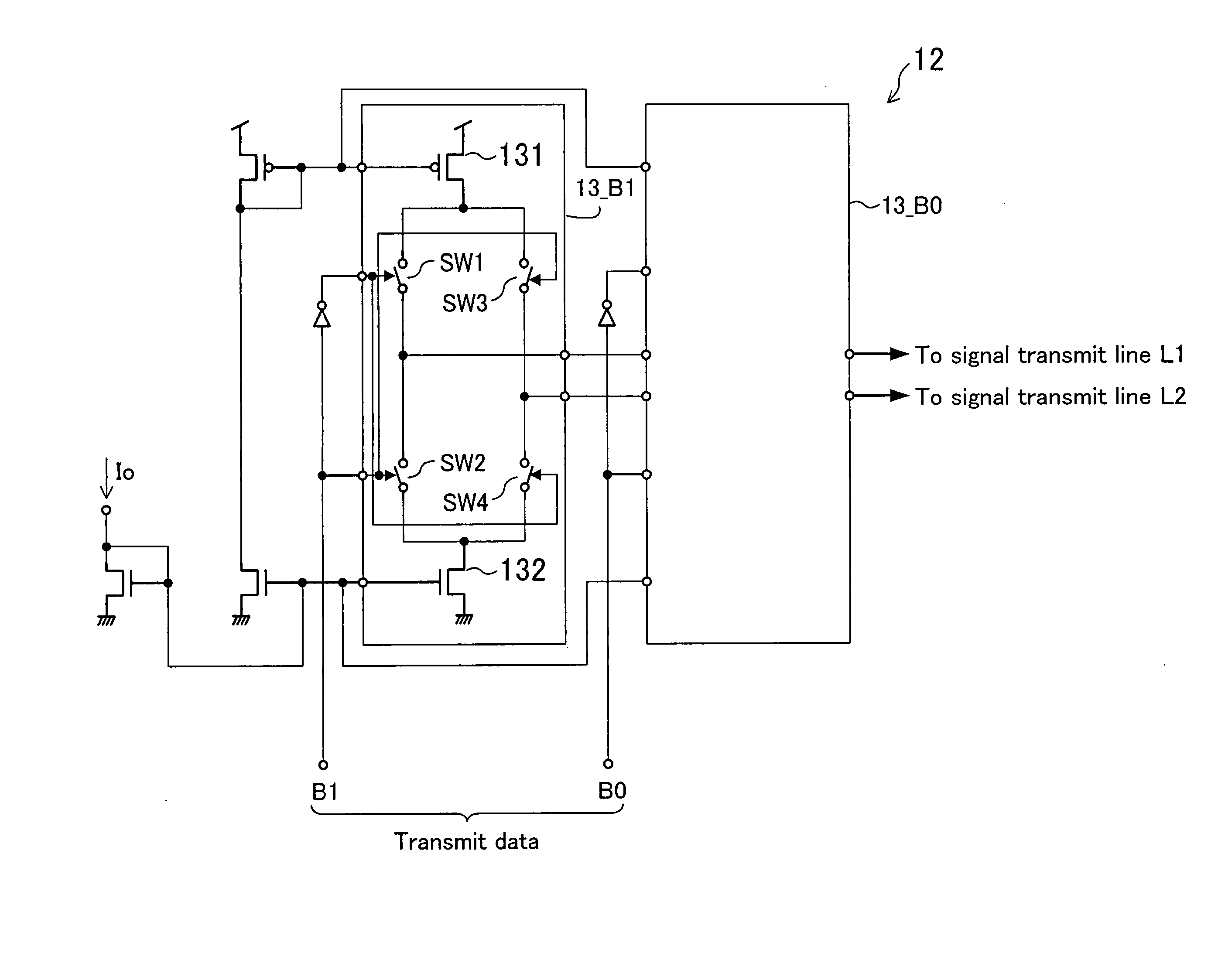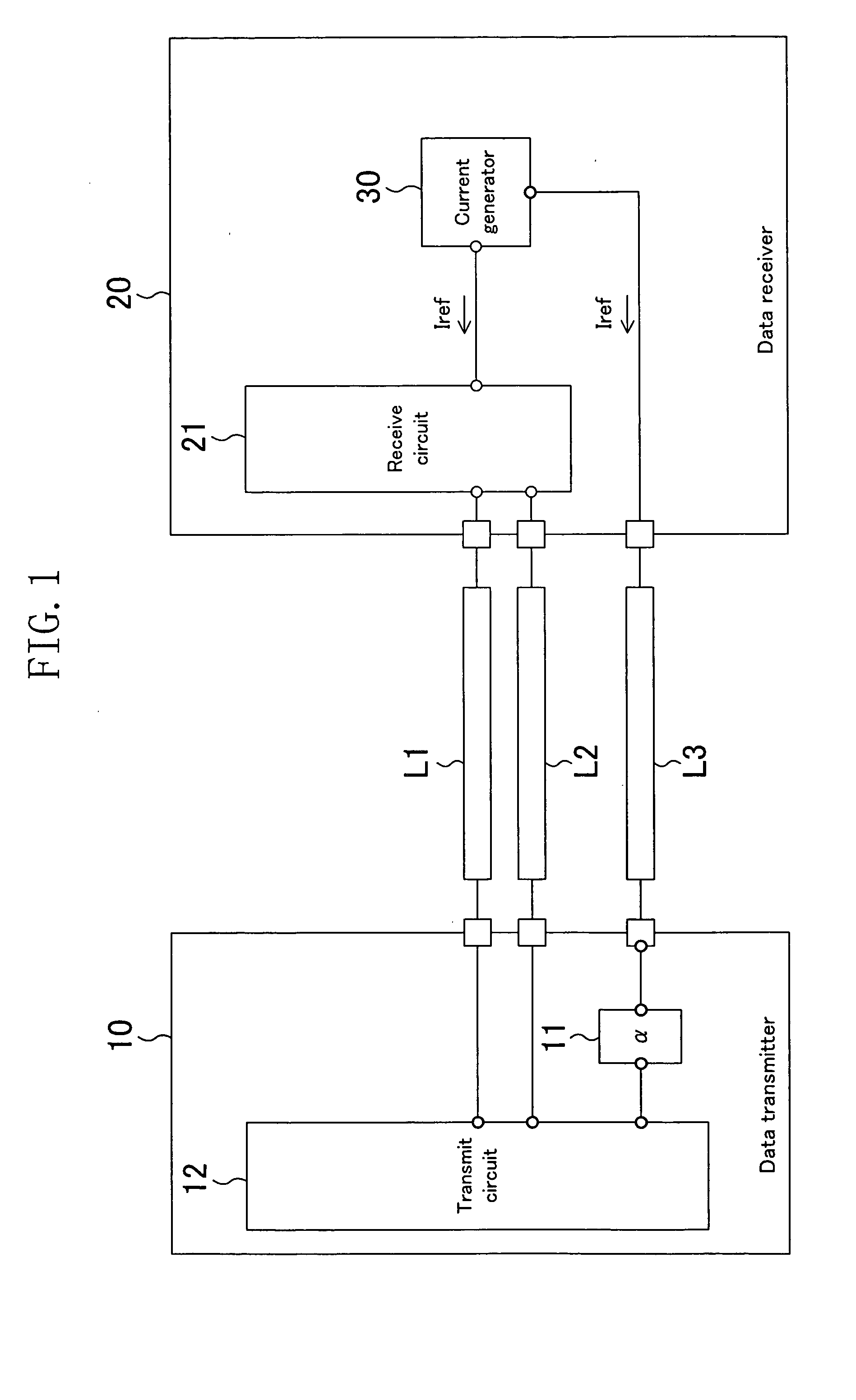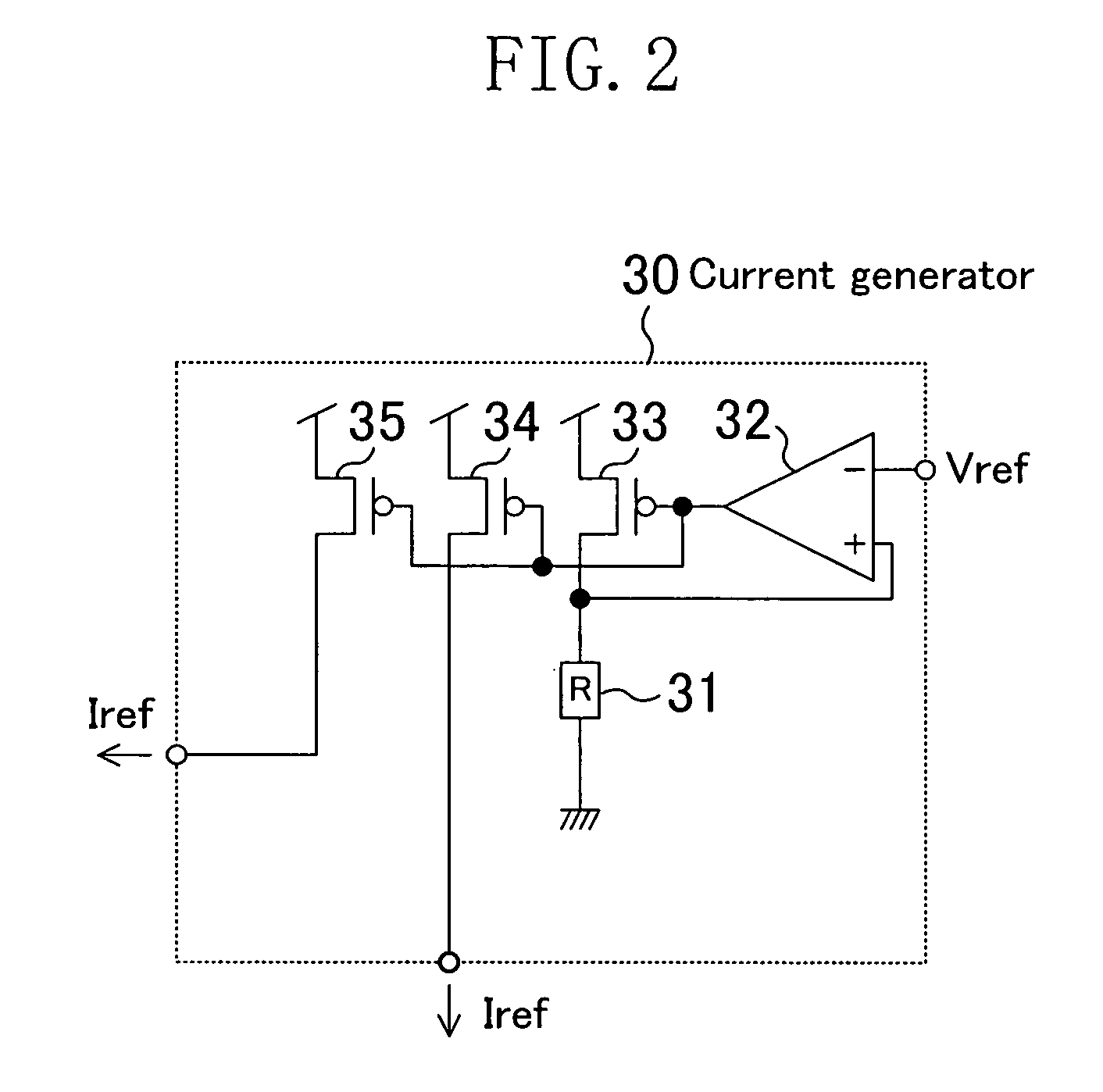Data receiver and data transmission system
a data receiver and data transmission technology, applied in the field of data transmission systems, can solve problems such as reducing the reliability of data transmission, and achieve the effect of high-quality multi-level data transmission
- Summary
- Abstract
- Description
- Claims
- Application Information
AI Technical Summary
Benefits of technology
Problems solved by technology
Method used
Image
Examples
first embodiment
[0034] (First Embodiment)
[0035]FIG. 1 illustrates the configuration of a data transmission system in accordance with a first embodiment of the present invention. The data transmission system of this embodiment includes a data transmitter 10 and a data receiver 20. The data transmitter 10 outputs via a signal transmit line L1 or L2 a current signal produced based on multilevel data and the data receiver 20 receives the multilevel data. Each of the data transmitter 10, and the data receiver 20 may be composed of a single chip LSI. The data transmission system of this embodiment further includes a current generator 30 for generating reference currents Iref. The current generator 30 is provided on the data receiver 20.
[0036]FIG. 2 illustrates the specific circuit configuration of the current generator 30. The current generator 30 receives a reference voltage Vref and outputs the reference currents Iref. In the current generator 30, one end of a resistance element 31 (resistance value R...
second embodiment
[0063] (Second Embodiment)
[0064]FIG. 7 illustrates the configuration of a data transmission system in accordance with a second embodiment of the present invention. The data transmission system of this embodiment differs from the data transmission system of the first embodiment in that a current generator 30 is provided not on a data receiver 20 but on a data transmitter 10. The components other than this are the same as those in the first embodiment, so the descriptions thereof will be omitted herein.
[0065] Even if the current generator 30 is formed on the data transmitter 10 as in this embodiment, effects similar to those of the first embodiment are attained. In other words, the current generator 30 may be provided anywhere in the data transmission system of this invention. The current generator 30 may be provided anywhere other than on the data transmitter 10 and the data receiver 20.
[0066] Although in the first and second embodiments, the data transmitter 10 and the data receiv...
PUM
 Login to View More
Login to View More Abstract
Description
Claims
Application Information
 Login to View More
Login to View More - R&D
- Intellectual Property
- Life Sciences
- Materials
- Tech Scout
- Unparalleled Data Quality
- Higher Quality Content
- 60% Fewer Hallucinations
Browse by: Latest US Patents, China's latest patents, Technical Efficacy Thesaurus, Application Domain, Technology Topic, Popular Technical Reports.
© 2025 PatSnap. All rights reserved.Legal|Privacy policy|Modern Slavery Act Transparency Statement|Sitemap|About US| Contact US: help@patsnap.com



